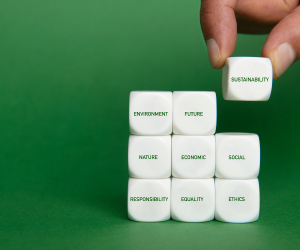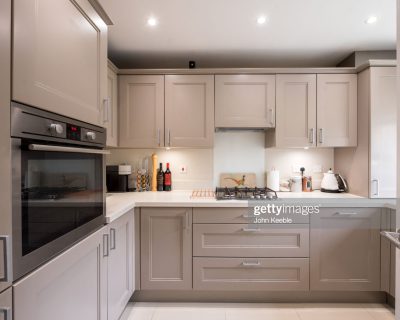Blog
How To Make Your Home More Sustainable?
Making your home more sustainable is a great way to help the environment. You can do this by reducing your carbon footprint, which is one of the most important things you can do for the planet.
It’s not just about recycling, or not using plastic bags in the grocery store. It’s about living in a way that doesn’t harm the planet, and it starts with small changes that can have a big impact on the environment.


Moawya Abdul Rahman, head of the structural engineering unit at Dubai Municipality said “switching to LED lights, recycling and reducing water consumption are just a few ways for residents to reduce their carbon footprint. But there are more ways to improve the performance of your home.”
There are many ways to make your home more sustainable, and we’ve listed a few below:
- Consider Insulation: Insulate your house from heat gain during summer (and heat loss during winter). Heat is an important factor when it comes to sustainability because it reduces the amount of energy that needs to be used to keep your house warm or cool.
- Installing new windows: You don’t want to go with single-paned windows, which are not energy efficient and can cause problems with heat retention in your home. Instead, choose double-pane or triple-pane windows that have an air gap between them (this helps block out noise and other outside elements). Also, make sure that you have a good seal around your window frames so no air leaks out of them when closed—this will also help keep your house cooler during the summer months!
- Solar panels and water heaters are another great way to make your home more sustainable: They don’t just save on electricity costs but also help reduce carbon emissions into the atmosphere by providing power from renewable sources such as sunlight! Solar panels can be installed on roofs or walls depending on how much space you have available within your home’s structure; however, it’s important to note that these systems do require some maintenance every here and now.
- Landscaping: Another way you can make your home more eco-friendly is by landscaping it with plants that require little maintenance, such as cacti or succulents. You could also plant trees that help clean up pollution in the air and absorb carbon dioxide from the atmosphere so they don’t end up contributing to global warming. Plus, you can also install a small lawn to help you grow your own herbs or veggies. In Dubai climate you can always grow your herbs, parsley, tomatoes, or cucumbers.
- Sourcing materials: If you’re looking for sustainable options, look for natural materials like bamboo or cork. These are all renewable resources that can be used again and again. They also have a lower impact than other common building materials like metal or plastic. Also, remember to look out for local materials that don’t inherit a carbon footprint through their oversea transportation.
- Paint With Low Volatile Organic Compounds (VOCs): VOCs are chemicals found in paints and other products that can contribute to air pollution and respiratory issues if they’re released into the atmosphere over time—this is why it’s important to choose paints with low VOC content when painting the walls of your home!
- Decoration: Use natural decorations like plants and flowers around your house instead of plastic ornaments that will end up in landfills. You can also use things like candles made from soy wax instead of petroleum-based wax; these candles burn longer without producing sooty smoke or unpleasant odours.
- Invest in eco-friendly electrical appliances: These are appliances that have been designed to reduce their carbon footprint, and many of them simply cost less to operate than their traditional counterparts. For example, a water-saving dishwasher uses less water than a traditional model and costs half as much to run per cycle.
- Install water-saving devices around your house, such as low-flow showerheads and faucet aerators. These will help you save money on your water bills while also reducing the amount of water wasted and therefore saving the environment from pollution.
- Donate before throwing out: This is a great way to help the environment and give someone else a chance to use the item you no longer want. There are tons of groups out there where people can give away their old stuff, and other people can take it off their hands. Check with your contractor what building materials can be deconstructed rather than demolished and see if you can give these bits a second chance to be useful for someone else’s home or renovation. Just search for the group closest to you!
Considering an upgrade to your current home? Check out some of our completed projects at the gallery here, or follow us on Instagram / Facebook for regular project updates and practical tips for home upgrades and renovations.


